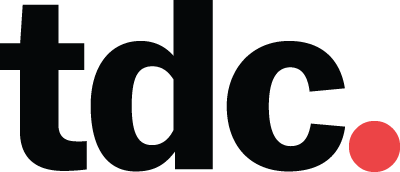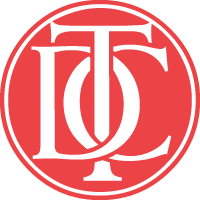Member of the Month: David Adams
TDC celebrates its talented and diverse membership by profiling a different member each month. David Adams is the co-founder of Art & Mechanical, a Toronto-based design agency that specializes in brand development and communications. TDC asked David to talk about how he became interested in type, his take on the Toronto design scene, how he created his firm, and what type trends he favors right now.
 Portrait: David Adams. Photo credit: Jason Gordon.
Portrait: David Adams. Photo credit: Jason Gordon.
Type is clearly central to a lot of your work. Has your work always had this special consideration for type? When did you first become interested in typography?
Type is definitely central to most, if not all of the work we do at Art & Mechanical. It’s important, fun, and good typography just makes everything better. Our approach is simple: Type does two things — it first creates a vibe and then it delivers a message, and when done well, magic happens. Done poorly, well, you know how that goes….
My work did not always have a special consideration for type. Early on in my education, type was used in functional ways as a means to an end—to create a logo for a company, to display information on a package, or to tell a story in some editorial. I didn’t know any better. I was thinking my work was pretty good, but when I look back, it was boring AF. And it wasn’t really until I took a class taught by the talented Paul Sych that I discovered how expressive typography could transform one’s message. He simply said, “Make it cool,” and that was enough for me to start thinking about type in a different way.
But type can’t just be cool, right? It sure can, but in the work we do at A&M, type needs to work differently. We try to play smack in the middle of the intersection where beauty and inspiration say hello to logic and function. Our name pretty much sums up this philosophy. I think type and typography (being one part of good design) enables a connection, and that connection allows us to inspire someone to act and make stuff happen. I certainly appreciate type for its pure aesthetic beauty, but at the end of the day, if type doesn’t function to solve the problems we encounter on a day-to-day basis, it just gets framed, put on a wall, and is appreciated for what it is. And we have a bunch on our walls!
 Don’t Sweat the Technique. Neon sign created for A&M’s office, custom typography by Ben Johnston.
Don’t Sweat the Technique. Neon sign created for A&M’s office, custom typography by Ben Johnston.
Tell us a bit about the Toronto design scene. When did Art & Mechanical get started?
Hmmm…the Toronto design scene. There was a time when I just wanted to get out. There wasn’t a whole lot happening here and I felt uninspired. I think that’s changed.
It’s booming here. Toronto feels more alive than it ever has for me.
Things have definitely been getting more interesting of late. Take food and the dining experience, for example. With the huge boom happening here, the diversity and quality of dining experiences has vastly improved. Moreover, restaurateurs have come to realize that food is only one part of someone’s experience, and now I’m seeing some amazing visual expressions being created to complement one’s meal.
Just look at your Instagram feed — people aren’t taking pictures of their food (thank God!) as much as they are recording what they’re eating or drinking from. I could look at pictures of Kit and Ace’s Sorry Coffee Co. coffee cups all day. They’re fun, and quirky and make me want to drink more coffee.
Back to the design scene… Overall the design community in Toronto is pretty tight-knit and small. I was talking to a couple of designers the other day, and they said there were only a few places in Toronto that they’d like to work. (I stared at them long and hard enough until Art & Mechanical was included in that list). But we’re just newbies.
My business partner and I have been around the block, but we started A&M in 2013 shortly after crossing paths on a project with a traditionally tough client. Nevertheless, we created a great process that resulted in some pretty decent creative, and that got us thinking, let’s do it again…and more often…and maybe on our own! So, we did. We started with no clients, no employees, and an empty office full of ideas on how we could do things better. And here we are today.
 The Contender — identity and menus created for a neighborhood sports bar.
The Contender — identity and menus created for a neighborhood sports bar.
What new advances or trends that you’ve noticed are exciting to you? Are there mediums you are interested in exploring more in either your professional or personal work?
Ugh. How about trends that are not exciting me? I think we have reached epic proportions and the complete, utter saturation of hand-done, super-crafty typography. Please stop. Please. We’ve hit peak craft, and it just needs to stop.
Everyone has been getting in on the action and going all out with everything — retail, packaging, identities. Heck, even the Province of Ontario is jumping on the bandwagon. There is a time and a place for that kind of stuff, but it’s not all the time just for the sake of it.
On the flip side, I have started to see some back-to-basics stuff that’s really refreshing for me –simple, clean typography and bold. Type worked into graphic treatments – colorful, nice. Please continue, whoever you are.
Although I love how technology has opened the doors to how we experience type, right now I’m most interested in more old school ways of doing things and being able to get away from the computer. I once owned a small letterpress, and it was a great way to get your hands dirty. Lately, my interest is in screen-printing. A little while back, we sent most of our staff to a screen-printing course and it was so much fun. We’ve got some room in the back of the office that’s kind of like a little workshop, and I’m hoping that we can make it a little more robust by adding some letterpress and screen-printing equipment.
Ha! And just after complaining about reaching “peak craft,” here I am talking about how much I love crafty mediums.
 Kyopo Kitchen — identity and labels created for a vegan kimchi maker.
Kyopo Kitchen — identity and labels created for a vegan kimchi maker.
Do you have interests or hobbies outside of your professional work that relate to typography?
I don’t know. Type is everywhere. And I think being a designer, it’s a bit of a curse because you notice all of it — the good, the bad, and the ugly — so, I don’t actively go out of my way to involve typography in life outside work. Well wait…maybe I do…
When the weather turns in the spring, I start visiting antique markets. Yes, I antique…sort of. All the hardcore treasure hunters are there before the crack of dawn combing through every inch to find the most valuable stuff, and then I stroll in sometime before noon. Everyone always looks at me as if I’m too late. But little do they know that I’m not really looking for “things.” I’m just poking around, observing.
Amidst all the old dusty, junky trash, there are some real typographic treasures to be found. For most things that I pick up, people will ask, “Do you like that? Why?” Most things that I pick up have some sort of typographic element, so when I tell them why I like it or think that it’s special, I see them working through things in their head. And I’m like, “Alright! This guy gets it! I’ve now done my good type deed for the day.”
But then I discover that they’ve just been figuring out how much to raise the price on me. Bah! Sometimes I buy, but most times I just appreciate the find and let myself be inspired. Then I go find a good lunch spot.
 The Lakeview — identity and collateral created for a 24-hour neighborhood diner.
The Lakeview — identity and collateral created for a 24-hour neighborhood diner.
Is there a particular type foundry (or foundries) to which you feel drawn? Whose type you use a lot?
Yes, absolutely. I have a couple places that I go to. The first is Village. It’s not really a foundry but a curated group of foundries that have banded together based on an aesthetic and philosophy to share knowledge and expertise. I love that concept. One foundry that is a part of this collective is Klim Type Foundry. Their fonts offer a good amount of flexibility despite some bold personalities in there.
Also Colophon and Grili Type have typographic flavors that I dig. And sometimes when you can’t be anything but lazy, researching type through sites like typewolf.com or fontsinuse.com can help make people think you know your stuff.
 Westside Studio — identity and collateral created for a commercial studio representing photographers, directors and producers.
Westside Studio — identity and collateral created for a commercial studio representing photographers, directors and producers.
Why are you a member of the Type Directors Club?
I’m a pretty new member, and I must admit that I first joined to get a discount on competition entries. With the quality of work that gets into those annuals, it’s not shocking when your own work doesn’t make the cut. But at least you got a discount on those entry fees, and get a book full of the winners who will inspire you for the next year’s crop of projects.
Competitions aside, there’s a lot of great information at your fingertips. I’m not in NYC that often, so it’s hard to attend special events, but I definitely take advantage of the book reviews, essays, and reading lists. And also, just being part of an organization full of like-minded and talented creatives who want to share their knowledge to the greater community feels good…like a nice bowl for ramen on a cold and cloudy day. Still, spring/summer, get here soon. Please.
Links:
Website: http://artandmechanical.com/
Twitter: @ArtandMech
Instagram: @artandmech
Website: http://davidadams.ca/
Twitter: @DCBAdams
Instagram: @dcbadams
Read past Member of the Month features here:
February 2017: John Clark
January 2017: Pamela Green
December 2016: Alexander Tochilovsky
November 2016: Jackson Alves
October 2016: Nina Stössinger
September 2016: Graham Weber
August 2016: Thomas Jockin
July 2016: Craig Ward
June 2016: Juan Carlos Pagan
May 2016: Wael Morcos
April 2016: Ilene Strizver
March 2016: Sascha Lobe
February 2016: Dawn Hancock
January 2016: Michael Bierut
December 2015: Yomar Augusto
November 2015: Debbie Millman
October 2015: Niral Parekh
September 2015: Marta Cerdà
August 2015: Kevin Cantrell
July 2015: Neil Patel
June 2015: Gail Anderson
May 2015: Ricardo Cordoba
April 2015: Cherise Conrick
March 2015: Paula Scher
February 2015: Ray Masaki
January 2015: Bruno Maag

